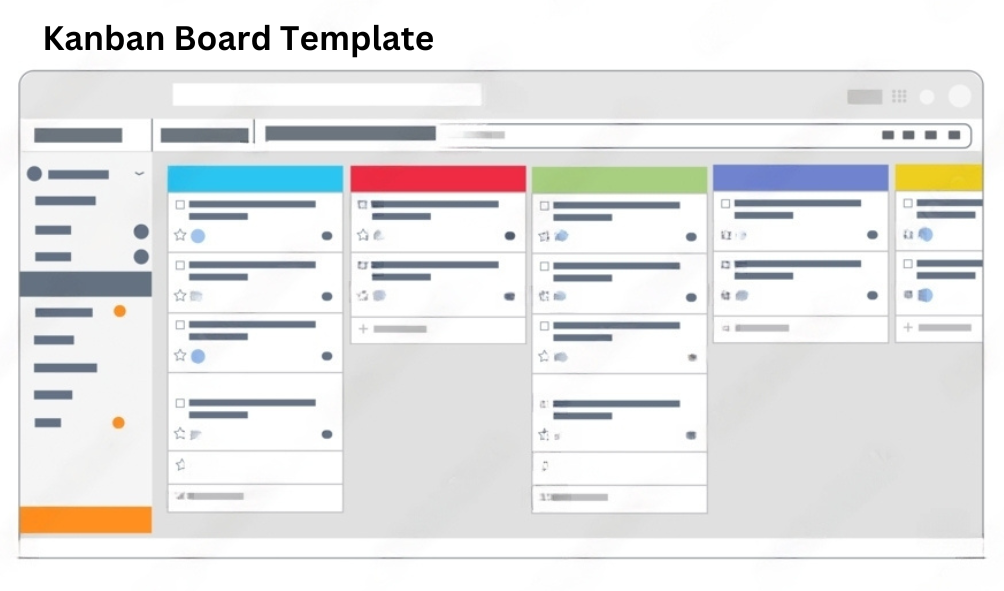Managing project portfolios can be a complex task, especially when dealing with multiple projects simultaneously. To streamline this process, many organizations turn to visual management tools, with Kanban boards being among the most effective. Kanban boards provide a clear and visual representation of tasks, helping teams understand their workflows and priorities. By incorporating swimlanes into Kanban boards, organizations can enhance their project portfolio management, improving visibility and efficiency. This article explores the concept of Kanban board swimlanes and how they can be utilized to master project portfolios.
Understanding Kanban Boards
Kanban is a visual project management methodology that originated in Japan, particularly in manufacturing, to improve efficiency and productivity. The core principles of Kanban focus on visualizing work, limiting work in progress (WIP), and optimizing flow. A typical Kanban board consists of columns representing different stages of a workflow (e.g., "To Do," "In Progress," "Completed") and cards that represent individual tasks or work items.
Kanban Boards allow teams to see their work at a glance, making it easier to track progress, identify bottlenecks, and manage workloads. This visual approach fosters collaboration and communication, as team members can quickly understand each other's tasks and priorities.

What are Swimlanes?
Swimlanes are horizontal rows on a Kanban board that help categorize tasks based on specific criteria. Each swimlane can represent a different project, team, priority level, or any other relevant categorization. By using swimlanes, teams can easily distinguish between different areas of work, ensuring that each project or task gets the appropriate attention.
Swimlanes enhance the functionality of Kanban boards by adding another layer of organization and clarity. They allow teams to visualize their work across multiple dimensions, helping to manage complex project portfolios more effectively.
Benefits of Using Swimlanes in Kanban Boards
- Improved Visibility: Swimlanes enhance the visual representation of tasks, allowing teams to quickly identify the status of each project or category. This improved visibility helps stakeholders stay informed about progress and potential roadblocks.
- Better Organization: By categorizing tasks into swimlanes, teams can maintain a more organized board. This structure makes it easier to locate specific tasks, monitor progress, and allocate resources effectively.
- Enhanced Focus: Swimlanes help teams focus on specific projects or priorities without getting overwhelmed by the entire portfolio. By visually separating different areas of work, team members can concentrate on their assigned tasks while keeping an eye on the overall portfolio.
- Streamlined Workflows: Swimlanes can help identify dependencies and relationships between tasks. By visualizing these connections, teams can optimize their workflows, reduce delays, and improve overall efficiency.
- Effective Resource Allocation: With swimlanes, project managers can easily see which projects are under-resourced or overburdened. This visibility allows for better allocation of team members and resources to ensure that all projects progress smoothly.
Implementing Swimlanes in Your Kanban Board
To effectively implement swimlanes in your Kanban board, follow these steps:
- Define Your Criteria: Determine the categories that make the most sense for your projects. Common criteria include project names, priority levels, teams, or phases of the project lifecycle.
- Set Up Your Board: Create a Kanban board with columns representing the workflow stages and horizontal swimlanes for the defined categories. Ensure that each swimlane is clearly labeled for easy identification.
- Add Tasks: Populate your board with tasks or work items, placing them in the appropriate swimlanes based on your chosen criteria. Ensure that each task includes relevant details, such as deadlines, responsible team members, and priority levels.
- Limit Work in Progress: Implement WIP limits for each swimlane to ensure that team members do not take on too many tasks at once. This limitation promotes focus and prevents bottlenecks in the workflow.
- Regularly Review and Update: Hold regular meetings to review the Kanban board and update the status of tasks. Encourage team members to provide feedback on the board's organization and make adjustments as needed.
Best Practices for Using Kanban Board Swimlanes
- Keep It Simple: Avoid overcomplicating your Kanban board with too many swimlanes. Stick to the most relevant categories to maintain clarity and focus.
- Encourage Collaboration: Foster a culture of collaboration by encouraging team members to communicate openly about their tasks and progress. Use the Kanban board as a central point for discussions.
- Monitor Metrics: Track key performance indicators (KPIs) related to project progress, such as cycle time, throughput, and lead time. Analyzing these metrics can help you identify areas for improvement.
- Celebrate Success: Recognize and celebrate completed tasks and milestones to boost team morale and motivation. This practice encourages a positive and productive work environment.
Conclusion
Mastering project portfolios through Kanban Board swimlanes can significantly enhance visibility, organization, and efficiency in managing multiple projects. By utilizing swimlanes to categorize tasks, teams can improve their focus, streamline workflows, and allocate resources more effectively. Implementing this visual management tool can lead to better collaboration, faster project completion, and ultimately, greater success in achieving organizational goals. As teams continue to navigate complex project landscapes, leveraging Kanban boards with swimlanes will prove invaluable in mastering project portfolio management.